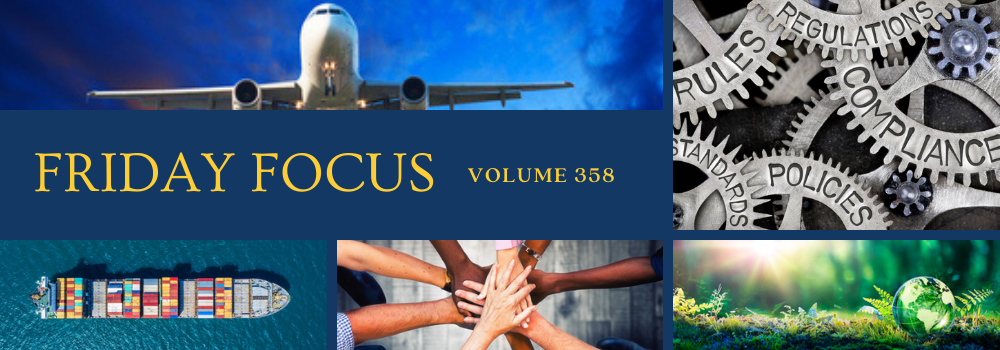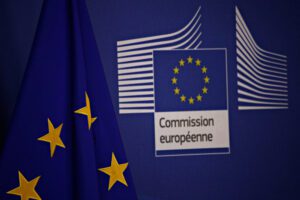Following are excerpts from a press release by the European Commission.
The Commission adopted five initiatives to strengthen the EU’s economic security at a time of growing geopolitical tensions and profound technological shifts. The package aims to enhance the EU’s economic security while upholding the openness of trade, investment, and research for the EU’s economy, in line with the June 2023 European Economic Security Strategy…
The initiatives adopted today aim at:
- further strengthening the protection of EU security and public order by proposing improved screening of foreign investment into the EU;
- stimulating discussions and action for more European coordination in the area of export controls, in full respect of existing multilateral regimes and Member States’ prerogatives;
- consulting Member States and stakeholders to identify potential risks stemming from outbound investments in a narrow set of technologies;
- promoting further discussions on how to better support research and development involving technologies with dual-use potential;
- proposing that the Council recommends measures aimed at enhancing research security at national and sector level.
…The EU is one of the biggest foreign investors in the world and recognises the importance of open global markets. It also acknowledges the growing concerns regarding outbound investments in a narrow set of advanced technologies that could enhance military and intelligence capacities of actors who may use these capabilities against the EU or to undermine international peace and security.
This is currently neither monitored nor controlled at EU or Member State level. The Commission’s White Paper on Outbound Investments is therefore proposing a step-by-step analysis of outbound investments to understand potential risks linked to them. This analysis will include a three-month stakeholder consultation and a 12-month monitoring and assessment of outbound investments at national level, which will contribute to a joint risk assessment report. Based on the outcome of the risk assessment, the Commission will determine, together with Member States, if and which policy response is warranted…
Enhance research security across the EU
In today’s complex geopolitical context, the openness and borderless cooperation in the research and innovation sector may be exploited and turned into vulnerabilities. Results of international research and innovation cooperation can be used for military purposes in third countries, or in violation of fundamental values. Higher education and research institutions can fall victim to malign influence by authoritarian states.
Against this background, the Commission presents a proposal for a Council Recommendation to provide more clarity, guidance and support to Member States and the research and innovation sector at large. EU action is required to ensure consistency across Europe and to avoid a patchwork of measures. By joining forces at all levels and across the Union we can mitigate the risks to research security and ensure that international research and innovation cooperation is both open and safe. The overall approach follows the principle ‘as open as possible, as closed as necessary’ as regards international research cooperation.
|
Asia-Pacific Trade and Investment Report 2023/24: Unleashing Digital Trade and Investment for Sustainable DevelopmentTo harness the potential of digital trade and investment for sustainable development, it is essential to carefully craft trade and investment policies. These policies should take into account the related societal and environmental opportunities and challenges. This report presents an integrated approach to policy-making, aimed at enhancing the understanding of trade and investment policymakers regarding their roles in realizing the potential of digital trade and investment as effective means for the achievement of the Sustainable Development Goals (SDGs). The role of digital trade and investment in sustainable development ‘Digital trade’ encompasses all international trade transactions that are digitally ordered or delivered. In the developing regions of the Asia-Pacific, the growth of digital trade is largely dependent on foreign direct investment (FDI) for the development of digital infrastructure, digital technology adoption and digital businesses. This ‘digital FDI’ provides essential capital, expertise, and cutting-edge technologies, which are vital for establishing a competitive stance in digital trade. Moreover, digital trade necessitates Information and Communication Technology (ICT) networks, equipment, and services. These ‘digital-trade enablers’ facilitate the process of ordering and delivering all digital trade transactions. Digital trade and investment present a promising means for economies in the Asia-Pacific region to achieve the SDGs. Central to this dynamic are digitally deliverable services, notably those associated with data, online platforms and services facilitating online transactions. Empirical studies conducted by United Nations Economic and Social Commission for Asia and the Pacific (ESCAP) and the United Nations Industrial Development Organization (UNIDO) found a positive relationship between increased digital trade and overall progress towards the SDGs. This association was especially pronounced for SDG targets connected to social development. |
|
Comparing the European Union Carbon Border Adjustment Mechanism, the Clean Competition Act, and the Foreign Pollution Fee Act |
On February 12-13, WITA will host its annual International Trade Conference. As part of the Conference, there will be a session titled “Balancing at the Border – Trade Policies to Close the Pollution Loophole.” Information can be found here and below.
The EU CBAM [European Union Carbon Border Adjustment Mechanism] entering into force in October 2023 is clear evidence that the use of international trade as a component of climate policy has left the realm of academia and is now an accepted policy tool. While the European Union argues that the EU CBAM is a straightforward extension of the EU ETS [EU Emissions Trading System] and should not be considered an international trade policy, the introduction of the EU CBAM has provided a rationale that supports the consideration of BAMs in other countries that have the potential to significantly impact global trade.
It is hard to overstate the extensive impact BAMs can have on international trade. While the EU CBAM identifies six categories of internationally traded products, the number of actual products that would be subject to the CBAM can be quite large. In the case of iron and steel alone, the number of products is over 100. Some estimates of the number of products covered by the CCA [U.S. Clean Competition Act] run into the multiples of hundreds, and the provisions within the FPFA [U.S. Foreign Pollution Fee Act] that allow domestic producers and others to add covered products to the existing list leaves the total number of covered products open-ended. The indirect impacts may yet be greater still through the consumption of covered goods in other products.
The cornerstone of any BAM is a measure of the GHG [greenhouse gas] intensity of a covered product. Since BAMs will impact vast numbers of covered products and therefore the producers of those products, it will be in the best interest of those producers to provide measures of GHG intensity for their products. While such producers will have the information and ability necessary to construct those measures, the fact that BAMs do not share a common frame of reference for intensity calculations imposes an additional burden on those producers. At present there is no forum the business community can utilize to reconcile differences across BAMs or develop interoperable definitions and protocols that would allow companies to provide information compliant with individual countries’ BAMs.
|
|
The sustained attacks on merchant shipping in the Red Sea by Yemen’s Iranian-backed Houthi rebels since November 2023 have given a fresh boost to a budding Central Asian trade network known as the “Middle Corridor” and, in so doing, created an opportunity for China and Iran, as shippers have been forced to consider alternative routes for their cargoes. Only a month earlier, in October 2023, representatives from Iran, Kazakhstan, Turkey, Turkmenistan, and Uzbekistan met to discuss how they could hasten the development of the Middle Corridor’s second major conduit, called the “Turkmenistan-Uzbekistan route.” During the same month, an Iranian minister spoke about the benefits of a third transit-trade route, a spur to connect the Turkmenistan-Uzbekistan route to Iran. Such transit-trade routes are valuable because they speed the flow of goods across national borders, and thus stimulate economic growth. As it was originally conceived in the late 2000s, the Middle Corridor’s main transit-trade route ran from Europe—through Turkey, the Caucasus Mountains, the Caspian Sea, and Kazakhstan—to China. The countries along the path of that route referred to it as the Trans-Caspian International Transport Route (TITR). Since then, they have worked to make it a viable alternative to Eurasia’s other major east-west trade routes—the Trans-Siberian railway in Russia (or the “Northern Corridor”) and the Indian Ocean (or the “Southern Corridor”). Though more work remains to be done on the TITR, Russia’s 2022 invasion of Ukraine shone an international spotlight on it. Suddenly, Europe sought a new overland trade route to East Asia that bypassed Russia, and the Middle Corridor fit that bill. |
|
|
|





